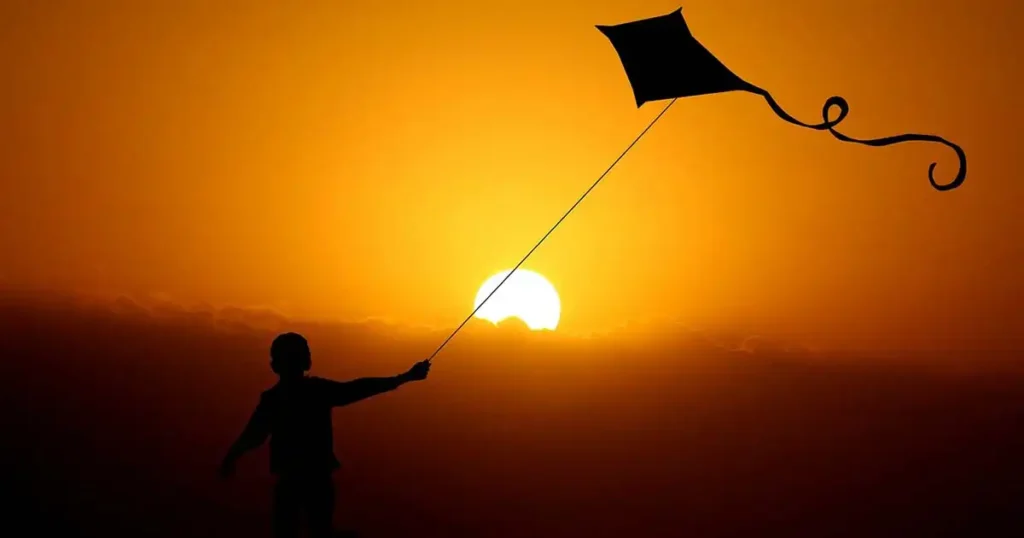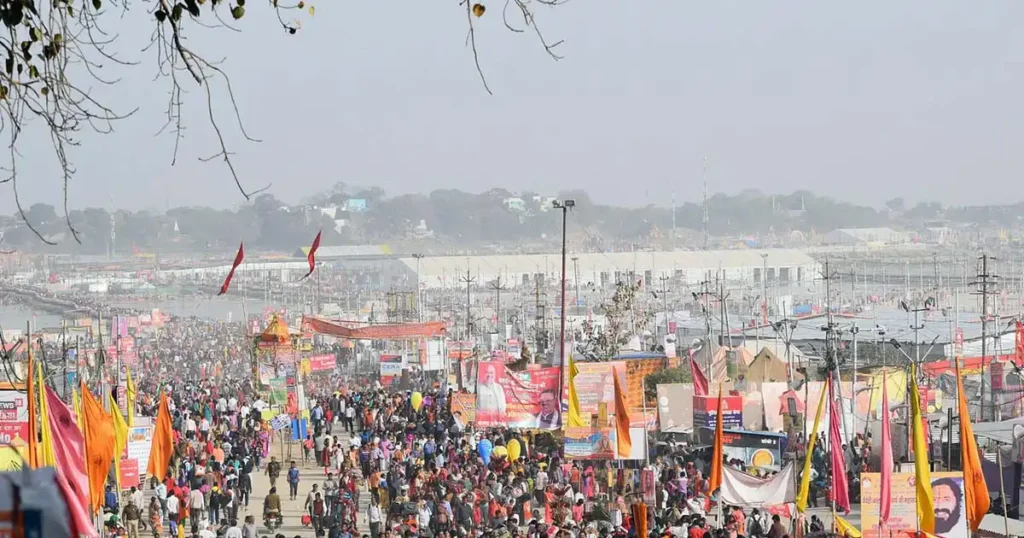Makar Sankranti, celebrated with much joy and fervor in various parts of India, is more than just a kite-flying festival. This vibrant and auspicious occasion holds a treasure trove of interesting facts that make it a unique celebration.
In this article, we will explore 16 amazing facts about Makar Sankranti, shedding light on the cultural, historical, and spiritual aspects that make this festival truly special. From its connection with the sun’s movement to fascinating traditions and rituals, these Makar Sankranti facts will add a new layer of appreciation for the significance of Makar Sankranti in the rich tapestry of Indian festivals.
Let’s dive into the enchanting world of Makar Sankranti and uncover some remarkable insights that make this celebration truly extraordinary.
16 Amazing Facts about Makar Sankranti
1. Why it’s called Makar Sankranti
Makar Sankranti is named after the zodiac sign Capricorn, called Makara. “Sankranti” means the sun’s shift from one zodiac sign to another. So, the festival’s name means the sun moving into Capricorn.
2. Earth’s Rotation and Makar Sankranti Date
The celebration date of Makar Sankranti is influenced by the rotation of the Earth. This shift happens because, although the precise day of the winter or summer solstice remains relatively constant (with a one-day margin of error), there is a slight alteration in how the Earth’s axis is aligned with the sun.
3. A Unique Hindu Festival Aligned with the Sun
Makar Sankranti stands out among Hindu festivals because it follows the solar cycle, known as Narayan. Unlike most Hindu celebrations tied to the lunar calendar, Makar Sankranti, along with festivals like Vaisakhi and Pongal, is based on the solar cycle. This makes it a rare occurrence in Hindu traditions.
4. Equal Day and Night
On Makar Sankranti, it’s said that day and night are about the same length. After the festival, it marks the official start of spring or the beginning of Indian summer, leading to longer days and shorter nights.
5. The Changing Date of Makar Sankranti
Many may not know that Makar Sankranti usually lands on January 14 in the Gregorian calendar. However, in some rare years, it shifts by a day due to the intricate movement of the Earth and the Sun.
There are two systems for calculating the Makara Sankranti date: Nirayana (without adjusting for the precession of equinoxes, sidereal) and Sayana (with adjustment, tropical). The January 14 date follows the Nirayana system, while the Sayana system typically points to around December 23 according to most Siddhanta texts for Hindu calendars.
Stay tuned for more fascinating facts about Makar Sankranti.
6. One Festival, Many Names
While widely known as Makar Sankranti, this festival is essentially a harvest celebration celebrated across India, spanning from the north to the south and east to west. In West India, it’s popular as Makar Sankranti, while down south, it takes on the name Pongal. In the north, it’s celebrated as Lohri. Additionally, it’s known by other names like Uttarayan, Maghi, and Khichdi, depending on the region.
7. Rare Shift in Centenary Celebration Date
After a century of being observed on January 14, Makar Sankranti will move to either January 15 or January 16 in 2019, except for 2021.
On the other hand, Lohri, Pongal, and Bihu will consistently fall on January 13 and 14 since they are fixed by date and not influenced by changes in the Hindu calendar.
8. Makar Sankranti: A Shift from Inauspicious to Auspicious
Makar Sankranti signifies the conclusion of Malmaas, an inauspicious month in the Hindu calendar, and marks the Sun’s transition to the zodiac sign of Makar (Capricorn). This shift heralds a change in seasons.
The festival takes on different names in different regions, such as Lohri in the north, Bhogali Bihu in Assam, and Pongal in the south. It symbolizes a transition from inauspicious times to the beginning of auspicious days.
9. Sharing Sweetness for Unity
Makar Sankranti is a festival that encourages people to mend relationships and promote peace within society. Consuming sweet til (sesame seeds) and gur (jaggery) serves as a reminder to use kind and pleasant words toward one another.
Why do we eat Til-Gudd?
During Makar Sankranti, people exchange sesame and jaggery sweets, like laddoos or chikkis, with the saying, “Til-gul ghya ani gud gud bola,” meaning ‘eat these sesame seeds and jaggery and speak sweet words.’ This tradition symbolizes fostering bonds and spreading joy.
It is believed that during the festival, the Sun God forgives his son Shani, and by sharing sweets, everyone is encouraged to bring happiness to others.
Additionally, as the festival occurs in winter, consuming sesame and jaggery is considered beneficial for health as they provide warmth. Hence, this sweet treat signifies both unity and well-being.
10. The Tradition of Kite Flying

In the past, people flew kites in the early morning when the sun was bright but gentle, aiming to soak in essential Vitamin D during winter and bolster their defenses against illnesses.
Why do we fly kites?
The intriguing ritual of kite-flying holds a fascinating reason. In ancient times, flying kites took place in the early morning when the sun’s rays were bright yet gentle on the skin. This extended exposure to the early morning sun was believed to be beneficial for both the skin and overall health.
Given that winter is a season associated with infections and illnesses, the act of basking in the sun during kite-flying was thought to help eliminate harmful bacteria to some extent. Thus, kite-flying became a clever and enjoyable way for Hindus to soak up the sun without even realizing the health benefits they were gaining. Cool, isn’t it?
11. A Historical Alignment: Uttarayan and Makar Sankranti in Aryabhata’s Time
Around 1,500 years ago, during Aryabhata’s era, Uttarayan and Makar Sankranti happened simultaneously. However, today, while Makar Sankranti falls on January 14, Uttarayan occurs during Dhanu Sankranti!
The interesting twist lies in the fact that, unlike 1,500 years ago, when the sun started its Uttarayan on December 21, it doesn’t find itself in the Makara Rashi now. This historical alignment shift is one of the lesser-known facts about Makar Sankranti.
12. Makar Sankranti and Religious Significance
Makar Sankranti often signals the start of the Kumbh Mela in Uttar Pradesh. Meanwhile, in South India, particularly Kerala, the challenging pilgrimage of Sabarimala concludes on this auspicious day. Throughout the country, people celebrate by taking a dip in holy rivers to cleanse themselves of sins.
Additionally, there’s a belief that departing during Makar Sankranti ensures direct entry to heaven, bypassing the cycle of rebirth. This highlights the festival’s profound spiritual significance.
13. Bhisma Pitamah’s Final Moments on Makar Sankranti
According to the Mahabharata, it is believed that Bhisma, while lying on the bed of arrows arranged by Arjuna, chose to wait until the dawn of Makar Sankranti to breathe his last breath.
Read 40 Mind-Blowing Facts About Mahabharata.
14. Honoring Cows: Agriculture’s Divine Assistance on Makar Sankranti
The veneration of cows during Makar Sankranti is seen as a divine intervention for agriculture. According to belief, Lord Shiva instructed his divine bull, Nandi, to stay on Earth and assist people in plowing fields, recognizing the increased need for food grains.
14. Purifying Rituals and Acts of Kindness
Makar Sankranti sees devotees taking holy baths in rivers to cleanse themselves of sins and invite prosperity. The celebration extends to charitable deeds and the reverence of livestock as part of the festive traditions.
15. Victory of Goodness over Darkness
Makar Sankranti holds a unique significance as the Sun’s rays, believed to be the abode of gods, come from the North direction on this day. This transition signifies the ascendancy of good forces and the weakening of evil forces residing in the South direction.
The importance of this celestial event is highlighted in the Mahabharata, where Bhishma, a central character, chose to depart from his mortal body on Makar Sankranti, emphasizing the symbolic victory of goodness over darkness.
16. Kumbh Mela: Epic Gathering Every 12 Years

Every twelve years, Makar Sankranti becomes the focal point for one of the world’s most massive mass pilgrimages. This extraordinary event draws an estimated 40 to 100 million people, establishing records for the largest human religious gathering.
During this grand gathering, attendees participate in rituals like offering prayers to the sun and taking a holy dip at the Prayaga confluence of the Ganga and Yamuna rivers, partaking in the revered Kumbh Mela tradition, often attributed to the teachings of Adi Shankara.
You may also like:
- 10 Incredible Facts about Madhubani Paintings
- 20 Incredible Facts About Indian History
- 20 Weird Customs and Traditions Around the World
Conclusion
In conclusion, exploring these 16 amazing facts about Makar Sankranti has been a journey into the rich tapestry of traditions, beliefs, and celebrations that make this festival so unique. From the fascinating ritual of kite-flying to the historical significance of Bhishma’s departure, Makar Sankranti emerges as more than just a date on the calendar—it’s a cultural mosaic weaving together diverse stories and customs.
As we marvel at the sun-soaked festivities and the symbolic til-gul sharing, it becomes clear that Makar Sankranti is not only about seasonal transitions but also a celebration of unity, harmony, and the triumph of good over evil. The grand scale of the Kumbh Mela every twelve years and the captivating tales from ancient scriptures add layers of depth to the festival’s charm.
As we bid adieu to this exploration of amazing facts about Makar Sankranti, let’s carry the spirit of bonding, joy, and reverence for nature that this festival embodies into our lives. May the warmth of the sun’s rays, both literal and metaphorical, continue to illuminate our hearts with positivity and goodwill. Happy Makar Sankranti!



